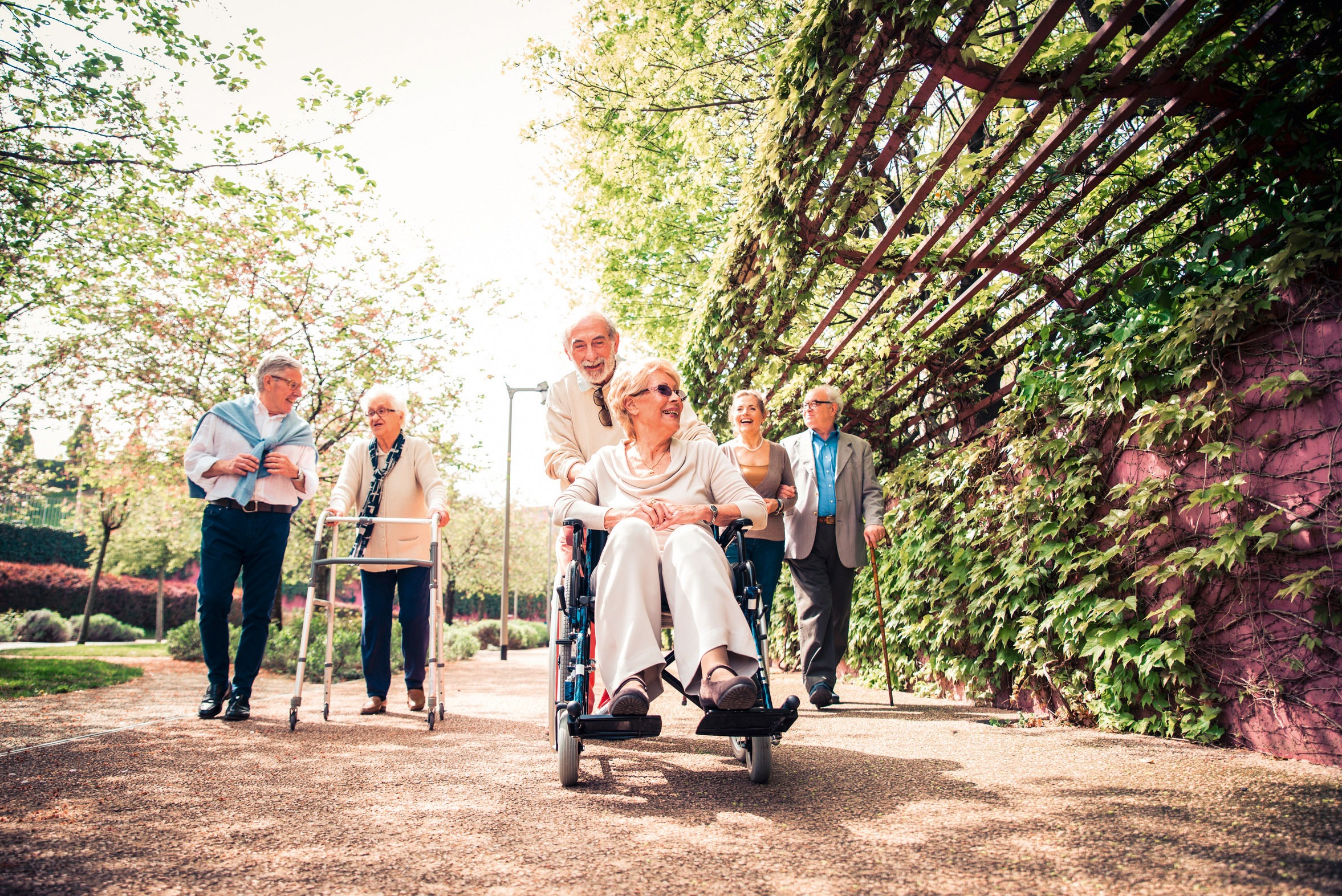
THERAPY-Magazin
How the environment can influence genes
Tübingen scientists reveal how movement, social engagement, and mental activity reduce Parkinson’s risk by altering alpha-synuclein gene expression—opening doors to new therapies.

Redaktion
THERAPY Magazin
Tübingen scientists are on the track of an interface between the environment and genes which could lower the risk of Parkinson’s
“People who move a lot, participate in community life and try to keep their brains fit are less often affected by Parkinson’s.”
“Move extensively, enjoy time with friends and revel in the delights of nature! Not only will you feel well physically, it also seems to be good for your brain!” This advice could serve as the summary of the results of a study recently published by a team of scientists from the Institute of Medical Genetics and Applied Genomics at the University Hospital Tübingen and the Hertie Institute for Clinical Brain Research (HIH). In the respected journal Frontiers in Cellular Neuroscience, the scientists working under Julia Schulze-Hentrich demonstrate how movement, social interaction and cognition largely prevented changes in the cell caused by the alpha-synuclein gene. The gene plays a key role in Parkinson’s disease.
Parkinson’s is a degenerative disease of the brain that predominantly affects the elderly. After Alzheimer’s, it is the second most common disease of its kind. It is currently estimated that there are around 400,000 Parkinson’s patients in Germany alone, with an expectation that these numbers will rise in line with progressive demographic shifts. The disease appears to result from a complex interaction of genes, aging and environmental factors. Certain environmental factors seem to increase the risk of disease, while others counteract the risk.
“People who move a lot, participate in community life and try to keep their brains fit are less often affected by Parkinson’s. We are intrigued to understand how these environmental conditions positively impact our genes,” says Schulze-Hentrich, the initiator of the study: “While we know there is a protective influence from certain environmental factors with regard to Parkinson’s, we still know far too little about how that influence works at the molecular level.” An understanding of the underlying cell mechanisms could potentially be used to mimic the effect of a protective environmental factor on key genes involved, in a targeted therapy.
For their studies, the scientists used mice carrying the human alpha-synuclein, and studied changes in gene activity throughout the genome under the influence of what is termed an enriched environment, which refers to a stimulating environment for the animals in terms of movement, social interaction and cognition. “The latest technologies, which we use and offer in our central research facility in Tübingen, make it possible to ask such questions,” adds Professor Olaf Riess, Director of the Institute of Medical Genetics and Applied Genomics in Tübingen.
Using this technology to understand the environment-gene axis in Parkinson’s better than ever before is central to the BMBF (German Federal Ministry of Education and Research) funded decipherPD project, which Schulze-Hentrich is coordinating and which involves a collaboration between six research teams from Germany, France and Canada. “In decipherPD, we are attempting to put together individual phenomena at different levels in the cell, like in a jigsaw puzzle, and to understand which signalling pathways environmental factors use in the cell, which traces they leave behind on the packaging structure of our DNA and how these, in turn, influence the activity of genes in Parkinson’s,” says Philipp Kahle, Professor of Functional Neurogenetics at HIH and one of the scientists involved, outlining the core task of the project. It is highly motivating to see that even in diseases such as Parkinson’s, we do not seem to be completely at the mercy of our genes, Schulze-Hentrich said. Her team is already working hard on follow-up studies to identify potential new avenues for much-needed new therapeutic approaches in Parkinson’s.
Parkinson’s is a degenerative disease of the brain that predominantly affects the elderly. After Alzheimer’s, it is the second most common disease of its kind. It is currently estimated that there are around 400,000 Parkinson’s patients in Germany alone, with an expectation that these numbers will rise in line with progressive demographic shifts. The disease appears to result from a complex interaction of genes, aging and environmental factors. Certain environmental factors seem to increase the risk of disease, while others counteract the risk.
“People who move a lot, participate in community life and try to keep their brains fit are less often affected by Parkinson’s. We are intrigued to understand how these environmental conditions positively impact our genes,” says Schulze-Hentrich, the initiator of the study: “While we know there is a protective influence from certain environmental factors with regard to Parkinson’s, we still know far too little about how that influence works at the molecular level.” An understanding of the underlying cell mechanisms could potentially be used to mimic the effect of a protective environmental factor on key genes involved, in a targeted therapy.
For their studies, the scientists used mice carrying the human alpha-synuclein, and studied changes in gene activity throughout the genome under the influence of what is termed an enriched environment, which refers to a stimulating environment for the animals in terms of movement, social interaction and cognition. “The latest technologies, which we use and offer in our central research facility in Tübingen, make it possible to ask such questions,” adds Professor Olaf Riess, Director of the Institute of Medical Genetics and Applied Genomics in Tübingen.
Using this technology to understand the environment-gene axis in Parkinson’s better than ever before is central to the BMBF (German Federal Ministry of Education and Research) funded decipherPD project, which Schulze-Hentrich is coordinating and which involves a collaboration between six research teams from Germany, France and Canada. “In decipherPD, we are attempting to put together individual phenomena at different levels in the cell, like in a jigsaw puzzle, and to understand which signalling pathways environmental factors use in the cell, which traces they leave behind on the packaging structure of our DNA and how these, in turn, influence the activity of genes in Parkinson’s,” says Philipp Kahle, Professor of Functional Neurogenetics at HIH and one of the scientists involved, outlining the core task of the project. It is highly motivating to see that even in diseases such as Parkinson’s, we do not seem to be completely at the mercy of our genes, Schulze-Hentrich said. Her team is already working hard on follow-up studies to identify potential new avenues for much-needed new therapeutic approaches in Parkinson’s.

Fachkreise
Science
THERAPY 2019-I
THERAPY Magazine

Redaktion
THERAPY Magazin
References:
Related contents
Find related exciting contents in our media library.
This is not what you are searching for? Knowledge
Meet our specialists.
Are you interested in our solutions? Schedule a meeting with a Consultant to talk through your strategy and understand how TEHRA-Trainer can help you to advance rehabilitation.